10% Human: How your body’s microbes hold the key to health and happiness by Alana Collen is my first introduction to the hidden world of the microbes that live in our gut. This topic has been gathering momentum (especially after the Gamechangers documentary) and this book is a great introduction to many to the basic concepts and makes a great case for thinking about our body’s bacterial residents a little more holistically than we have done so far.
The book is well written and engaging. There are a lot of surprising facts and new concepts that I could not help be intrigued by. However, as I find with more and more books these days, it is written in what I think of as “Malcolm Gladwell style”. A lot of the time and text is devoted to story-telling and making a captivating case for the microbiome instead of making the book more information-heavy. I think about half of the book could be edited out for a person who is looking for facts and not repeated anecdotes. This is, of course, my personal opinion. I know a lot of people whole liked reading about the many case studies and yet-unproven possibilities that the book explores. The author comes across as an evangelist of a brave new frontier, where despite scientific rigour, there is entirely too much speculation for my taste.
10% Human is full of zeal and enthusiasm. It is a powerful proponent of its core idea that our microbiome may be far more important than we have given it credit for so far. I definitely recommend reading the book if you don’t have any knowledge of this topic yet. It has definitely opened my eyes to a very different world and provided scientific backing to some things that people often say but don’t really understand.
I have included my summary of the book below. This is an actual summary, not a set of highlights as I have done in some other book reviews. I hope it conveys the essence of the arguments and knowledge of the book. If you find it interesting enough to make you read the book, or if you want to read the book anyway, I suggest you read Chapters 2,3, and 8 thoroughly since they have a lot of information. Chapter 7 also has some interesting insights. The rest of the chapters can be skimmed.
Introduction
- The human body doesn’t have significantly higher genetic complexity than rats or pigs.
- Human and microbes are symbiotes
- The human microbiome project (similar to the Human Genome Project) maps the DNA of our microbiome.
- It is convenient from an evolutionary perspective to have microbes do some functions instead of having to evolve genes for everything.
- Darwin onwards, the Appendix was always thought to be useless, but it actually is a reserve of microbes and thus has evolutionary value.
- Our body is a tube with skin on the outside and the digestive track ALSO on the outside (the inner, exposed layer of the tube).
Chapter 1: 21st-century sickness
- Pneumonia is actually a symptom of several difficult microbes working together. There is no single responsible microbe.
- 4 major medical breakthroughs have significantly reduced death and disease:
- Vaccination
- Germ Theory and hygienic medical practices
- Water sanitization
- Antibiotics
- There are diseases that we think are normal but are very recent in their scale of occurrence. They were extremely rare just two or more generations back. These are not NORMAL, nor is there anything inherently “human” about them.
- Autoimmune diseases :
- Allergies
- Diabetes
- Obesity
- Autism
- Why are these diseases happening now :
- Genetics: Good explanation for individual cases, but does not explain the widespread increase in numbers. Our genes could not have changed that much.
- Environment: Two main themes tying disparate thing together –
- Immune system common between Allergies and autoimmune
- Gut Dysfunction: Autistic people have chronic diarrhea
- 60% of the immune system’s tissue is located in the intestine since the separation between and “outside” in “inside” is only a few cells deep.
Chapter 2: All diseases begin in the gut
- Calories in – Calories out is not enough to explain obesity
- Warbler birds gain a disproportionate amount of weight before they migrate. They shed it equally fast post-migration. Even those in captivity do this without migrating at all. How?
- Irritable Bowel Syndrome is a microbial imbalance:
- No disease as such, hence no known cure
- Usually triggered by bouts of antibiotics or some other infection.
- Conjectured to be an imbalance in the microbiota. Microbial populations become unstable, thereby causing “irritable bowel”
- Obesity may be infectious:
- Usually blamed on lifestyle or genetics.
- Obese people have more of the Firmicute class of bacteria, lean people had more of the class of Bacteroidetes.
- Changing the proportion can cause weight loss/gain in mice. Since this is caused by microbes, it might mean that obesity is contagious. Some statistical data supports this.
- Calories in means not just what we eat, but what we absorb
- Small intestines absorb whatever we easily can.
- Leftovers go to large intestines, where microbes breakdown what they want further. What remains is simple enough to be absorbed again by us, hence increasing the calorie intake.
- A vegetarian suddenly eating meat will not get extra calories because they don’t have the microbes to break down residual meat (which carnivores already have).
- Microbes can also switch specific genes on/off to control fat storage.
- The gut as a complex system:
- Leptin is released by fat cells to suppress appetite once we have sufficient energy stored in fat cells.
- In obese people, the brain becomes resistant to Leptin.
- This causes the feedback loop to breakdown and people just keep eating.
- Lean people make new fat cells to store sparsely with energy. In obese people, larger cells are formed with too much fat content. These fat cells are also surrounded by immune cells as if they are an infection. This indicates dysfunction in the energy storage mechanism.
- They also have high amounts of LPS (Lipopolysaccharide) in their blood. LPS causes this fat cell inflammation and also suppresses new fat cell creation, leading to existing cells being overstuffed with fat. LPS forces us to store rather than burn.
- LPS gets into the blood because there isn’t any Akkermansia Muciniphila in the gut lining of fat people, which leads to a thinner layer of mucus over the lining, and hence LPS seeps in.
Chapter 3: Mind Control
- We assume mental disorders are due to genetics or socio-environmental factors, but this assumption is baseless.
- Bacteria are known to modify animal behaviours for evolutionary advantage. e.g. Cordyceps forces ant to spread their spores
- Gastrointestinal symptoms are common in people with psychological disorders.
- Ellen Bolte’s son became autistic after multiple rounds of antibiotics. She focussed on his gastrointestinal symptoms and came up with groundbreaking insights into how autism may be caused by microbiome damage/imbalance.
- Toxoplasma is a parasite that causes personality changes in humans. This is well documented. Disproportionate amounts of it are found in the bodies of people suffering from schizophrenia, OCD, and other mental disorders.
- The vagus nerve connects the gut to the brain and microbes can send small electrical spikes up it to make us “happy”. e.g. If we eat the food they like, they can create chemicals like Serotonin, thereby “rewarding” us with happiness.
- Propionate has been known to cause autism-like behaviours among rats. It causes rats to lose the ability to “unlearn” which is essentially the process of unused synapses being cleaned up by the immune system. New connections can be formed, but the old ones never go away. It is possible that propionate (created by Short Chain Fatty Acids in our large intestine) may be a cause for autism.
- Ellen Bolte’s theory is that autism is caused by the bacterium C.tetani after it enters the blood directly after the protective microbiome has been damaged by antibiotics (leaky gut).
Chapter 4: The Selfish Microbe
- The most widespread microbes make us not-quite-sick-enough so that we can continue to move around and spread them. The most virulent diseases don’t spread too much since they too fast.
- In most people, the problem is not how to boost immunity but how to dampen it. Our immune systems confuse harmless things with dangerous ones. e.g. Allergies to common things are treated by smothering the immune system using antihistamines.
- Hygiene hypothesis: Increase in allergies ties with an increase in hygiene and therefore too few infections at an early age. This could not be proved, and a strong counterargument is that if immune cells are lying idle in hygienic environments, why don’t they just attack the whole microbiome?
- How does the immune system identify that which is external but acceptable (food, good microbes) or internal but to be attacked (unused synapses to unlearn/forget)?
- Where cooperation helps in spreading genes, groups are selected over individuals. Animals and their microbiota have always co-evolved (mitochondria are essentially very simple bacteria), and hence evolution selects for the best combination of human + microbial genes (called the holobiont).
- The immune system has different types of cells: macrophages consume threatening bacteria, memory B cells attack specific targets, T helper cells help in communication between other cells, T-regs calm down an immune response.
- Immuno response is triggered by antigens, molecules coming off the surface of invading pathogens. But pathogens and our microbiota both have antigens coming off them.
- Evidence suggests that our microbes know how to increase the number of T-regs to prevent the immune system from attacking them. Each species has its own way of doing this.
- The cholera pathogen V. Cholerae uses diarrhea as a way of spreading, just as the immune system uses diarrhea as a way of flushing out germs. It has copied the immune system mechanism to its own advantage.
- Leaky Gut: When a pathogen is able to convince the body to open the protein walls of the gut lining and get in the bloodstream. When the microbiome is damaged, pathogens are able to reach the gut lining, triggering the immune response to open the cell wall, and hence cause a lot of diseases.
Chapter 5 – Germ Warfare
- The use of antibiotics has been on a steep rise since 1945. Farmers started giving antibiotics to chickens to get them to grow fat. They may be causing the same effect in humans by disturbing the microbiome.
- In the 1950s, antibiotics were successfully prescribed for premature or malnourished babies to get them to gain weight. The broader implications of this were ignored in medical research.
- In the western world (and generally everywhere), antibiotics are prescribed indiscriminately even when in a large majority of cases they are useless or overkill, resulting in antibiotic resistance.
- There is a statistical correlation that microbial imbalance caused by taking antibiotics can cause autism (or any other disease triggered by dysbiosis), but there is little hard evidence yet.
- Broad-spectrum antibiotics kill pathogens and benevolent microbes since they cannot distinguish between them. The diversity of microbiota reduces rapidly and can take weeks or sometimes years to recover.
- Antibacterial products (other than alcohol) like triclosan have no scientific basis, and can actually cause more infections by killing resident bacteria and allowing new opportunistic ones to take root.
- Streptococcus may be the cause of OCD. It normally just causes strep throat but occasionally triggers an autoimmune response that harms basal ganglia, thereby making us unable to choose between one of the multiple possible actions. This causes “twitching” like Tourette’s Syndrome. OCD patients are often obsessed with washing hands. This may be because streptococcus can survive hand washing better than other species and hence might be triggering a mental reward cycle to perpetuate itself.
Chapter 6: You are what they eat
- The Giant Panda is genetically carnivorous. It only manages a vegetarian diet with the help of microbes that break down cellulose.
- It is difficult to study nutrition in isolation since reducing one component must increase some other and vice-versa.
- We don’t need to look at the diets of cavemen or other centuries-old people to know what we are “meant” to eat. We can look at remote tribes untouched by modernization. One of the biggest differences is fiber. Modern western diets are low in fiber and the decrease corresponds neatly with the obesity epidemic. Switching to a high fiber diet can promote Akkerminsia Municiphila as mentioned in chapter 2, thereby reducing obesity.
- A plant-rich diet makes for a “lean” set of gut microbes.
Chapter 7: From the very first breath
- Babies are sterile in the uterus. Their microbial colonies are seeded by getting covered in vaginal and fecal matter in the process of being born.
- The vagina is covered in lactobacilli which can kill other harmful bacteria to protect the baby. They can also breakdown milk, hence the baby can maximize energy extracted from milk.
- C-section births have shot up in the last few decades. These babies are more prone to dysbiosis related diseases and other infections since they do not get the microbes from their mothers (as naturally born babies do).
- Over 130 types of Oligosaccharides are found in human breast milk. They nourish not the baby directly but nourish its microbiome instead. They also prevent pathogens from taking hold by occupying the specific attachment points pathogen use to latch on to the body – this is distinctly natural selection.
- The composition of breast milk changes as the baby grows older. It contains more oligosaccharides in the early and more lactose later on.
- The microbial composition of breast milk also changes. Gut microbes in the mother are transported to the breasts so that the baby can consume them for a more diverse bacterial colony. There are far more microbes in the early days than there are later (when the baby’s microbiota is already stabilized).
- Bottle feeding takes away all of the advantages of breastfeeding. Bottle milk is mostly cow milk, and infant formula has nutrients but has no bacteria. Babies need very specific types of microbes at specific stages of growth. bottle feeding has none of the adaptations necessary for this.
Chapter 8: Microbial Restoration
- The “autointoxication” theory of diseases: Microbes rot the remains of our food in the colon and the organ produces all kinds of diseases. The widely adopted solution was to remove the colon.
- Probiotics
- Elie Metchnikoff suggested that eating bacteria (e.g. as yogurt) can cure autointoxication. These were the first Probiotics.
- The line between food supplements and drugs is blurring and there isn’t a lot of legislation yet.
- Probiotics deliver a small amount of bacteria to the gut, but it difficult for such small numbers to set shop, or work harmoniously with existing bacteria, or not crowd out others which are also useful. The effects are therefore not very predictable.
- For complex illnesses like type 1 diabetes and multiple sclerosis, probiotics are too little too late.
- Faecal Microbiota Trasplantation
- Take poop from a healthy person and put it in a sick person’s gut to restore their microbiome.
- Other animals also eat feces
- Cure rates are as high as 95% after two rounds of treatment
- Since stool is not medically regulated, there have been no formal clinical trials – a lot of doctors remain unconvinced.
- Open-Biome is a non-profit stool bank that works similar to a blood bank. They screen donors for health, maintain supplies, and ship samples.
- Prebiotics
- Probiotics need constant replenishment. Prebiotics promote the right kind of microbial growth by supplying the raw materials for it.
- Speculation: Can we tailor probiotics and fecal transplant like we personalize and choose at sperm banks?
Read Next : More book reviews on this blog
If you liked this, subscribe to my weekly newsletter It Depends to read about software engineering and technical leadership
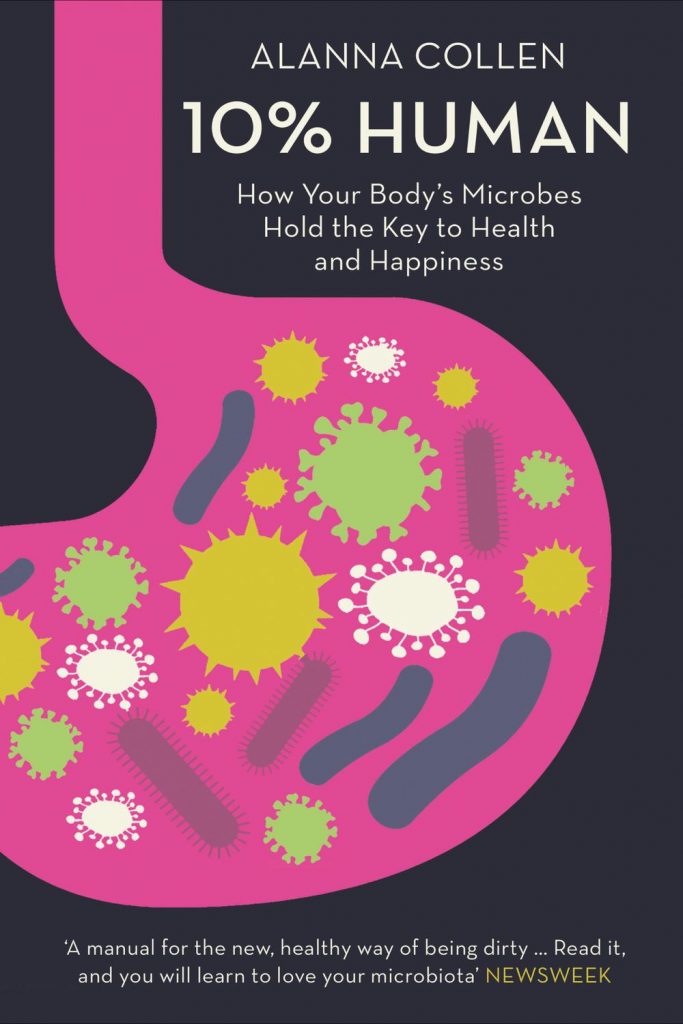

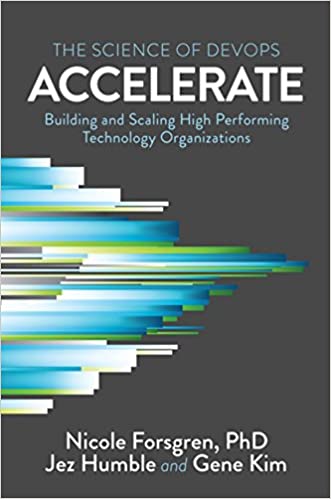
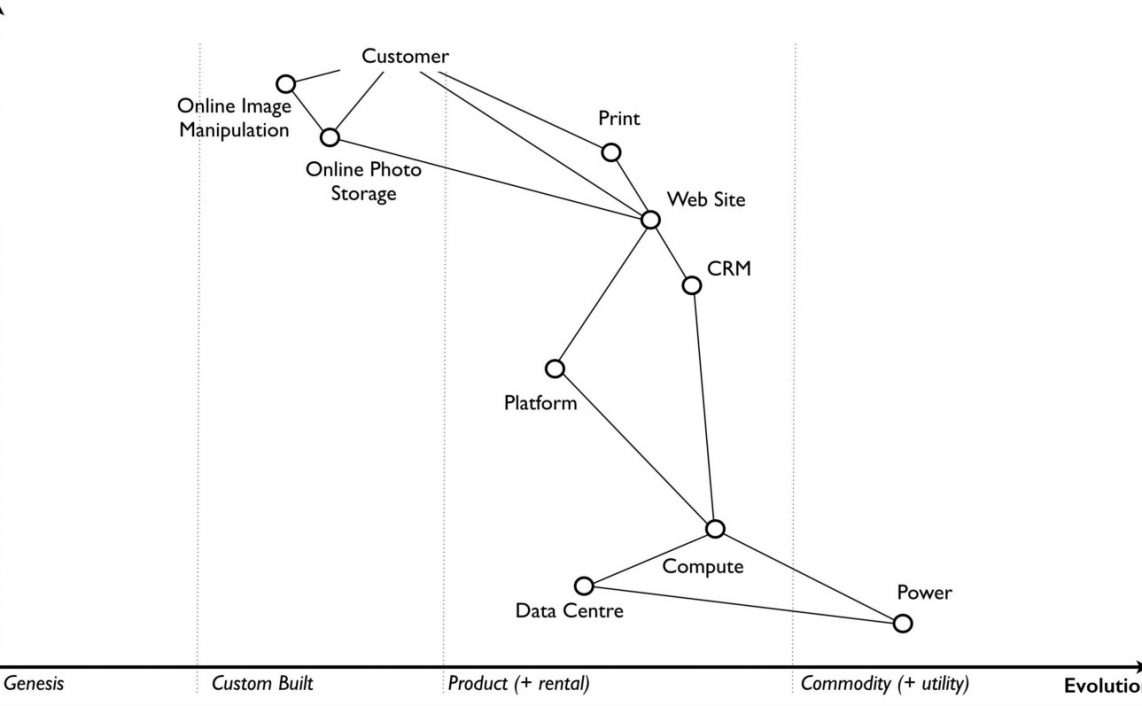
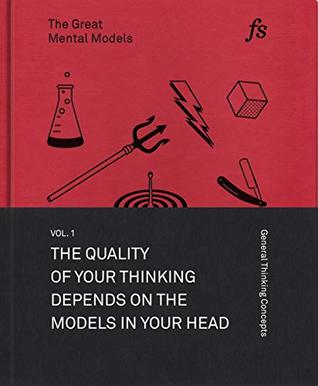
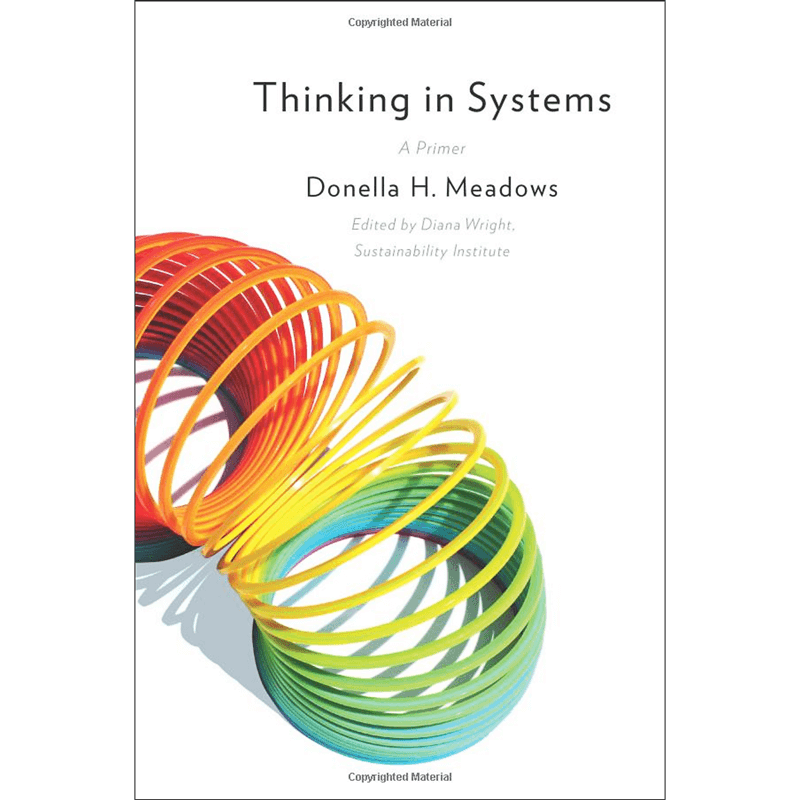
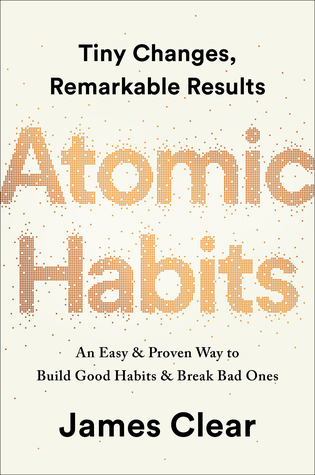



Fascinating!